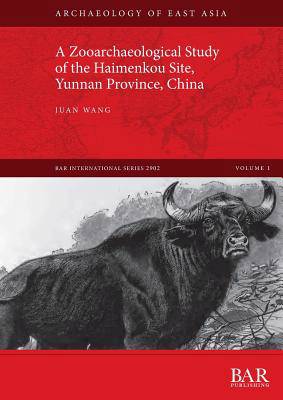
- Retrait gratuit dans votre magasin Club
- 7.000.000 titres dans notre catalogue
- Payer en toute sécurité
- Toujours un magasin près de chez vous
- Retrait gratuit dans votre magasin Club
- 7.000.000 titres dans notre catalogue
- Payer en toute sécurité
- Toujours un magasin près de chez vous
A Zooarchaeological Study of the Haimenkou Site, Yunnan Province, China
Juan WangDescription
Archaeology of East Asia, Volume 1
Haimenkou was an important location, with trade and cultural links connecting parts of modern Southeast Asia and northwestern China in ancient times. This book is based on an analysis of the faunal assemblage recovered from the Haimenkou site during the 2008 field season in Yunnan Province, China. It investigates the human-animal relationships at Haimenkou through a time span running from the late Neolithic Period to the middle Bronze Age (ca. 5000-2400 BP). The animal exploitation patterns, local animal domestication processes, human subsistence strategies and communication networks linking Haimenkou and other regions in prehistoric China are studied. Domesticated pig, dog and sheep bones were identified. Over sixteen wild mammal species as well as bird and fish bones and mollusc shells were also recovered. The results suggest that the Haimenkou people developed a mixed subsistence economy, consisting of crop farming, plant food gathering, animal husbandry, hunting and fishing.
Spécifications
Parties prenantes
- Auteur(s) :
- Editeur:
Contenu
- Nombre de pages :
- 218
- Langue:
- Anglais
- Collection :
- Tome:
- n° 2902
Caractéristiques
- EAN:
- 9781407316130
- Date de parution :
- 31-07-18
- Format:
- Livre broché
- Format numérique:
- Trade paperback (VS)
- Dimensions :
- 210 mm x 297 mm
- Poids :
- 712 g







